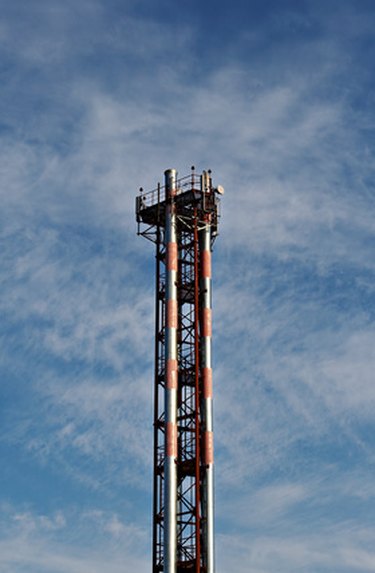
Though data communication may seem a relatively new innovation, the history of data connections dates to the early 19th century. Through an array of technological developments that enjoyed commercial, government and military contributions, data communication evolved from simple wired connections to a robust global exchange of information.
Definition
Video of the Day
Before studying the history of data communication, it is first important to understand exactly what constitutes this form of information exchange. Because the history of data communication extends well beyond modern computer connections and wireless devices, some might find the communication channel's earliest roots surprising. According to Dr. Carl Rebman, professor of Data Communications and Computer Networks at the University of San Diego, lexicographers have defined data communication as "Any process that permits the passage from a sender to one or more receivers of information of any nature, delivered in any easy to use form by any electromagnetic system." This definition helps historians trace the roots of data communication considerably further than modern digital equipment.
Video of the Day
Early History
According to the History of Computing organization, data communication has its earliest roots in Samuel Morse's 1837 exhibition of a telegraph system. An account of data communication history posted by telecommunications experts at General Telecom, LLC also points to a telegraph patent that inventor Charles Wheatstone filed that same year. By 1843, telegraph service had become adopted by the Great Western Railway, an endorsement that allowed the service to expand across the nation.
Telecom Developments
Improving on the telegraph, according to the History of Computing, Alexander Graham Bell introduced the telephone in 1876. Though standard telephone lines did not carry data traffic until nearly a hundred years later, the development of early telecommunications—coupled with an 1895 invention by Guglielmo Marconi, the radio—laid the groundwork for numerous subsequent developments in communication technology. In 1947, Bell Labs introduced the transistor, a device that found integration in myriad subsequent electronic products. The U.S. government expanded on these technologies in 1958 with its launch of a communications-oriented satellite, and the first facsimile transmission over standard telephone lines occurred four years later.
Computer Connections
After the first fax transmission in 1962, the modulation of data into sound for transmission across telephone lines spread in popularity for several years. Though modulation/demodulation, or modem, technology continued to carry slower data traffic for the remainder of the 20th century, according to the History of Computing, the 1969 development of Internet Protocol (IP) marked a significant milestone in data communication history. Within the following decades, early packet communication technologies like Asynchronous Transfer Mode (ATM), Frame Relay and Integrated Services Digital Network (ISDN) emerged as a viable solution for commercial and high-end residential data needs. By 1991, more than 1 million servers had come online using Internet Protocol technology, and the World Wide Web emerged as the primary component of the Internet by the mid-1990s.
Wireless
As wired data communication expanded, a separate form of data exchange that required no wires experienced a concurrent development. According to the wireless communication reference website WirelessCommunication.nl, wireless technologies developed rapidly during World War I. By 1921, the first commercial radio voice broadcast, a communication channel that transmitted data in the form of modulated radio waves, had taken place and police dispatchers had adopted the technology. In 1974, the Federal Communication Commission (FCC) began allocating wireless spectrums for wireless communication, and wireless companies began integrating radio packet data as early as 1984. This technology evolved into the various digital wireless packet data protocols used into the 21st century.